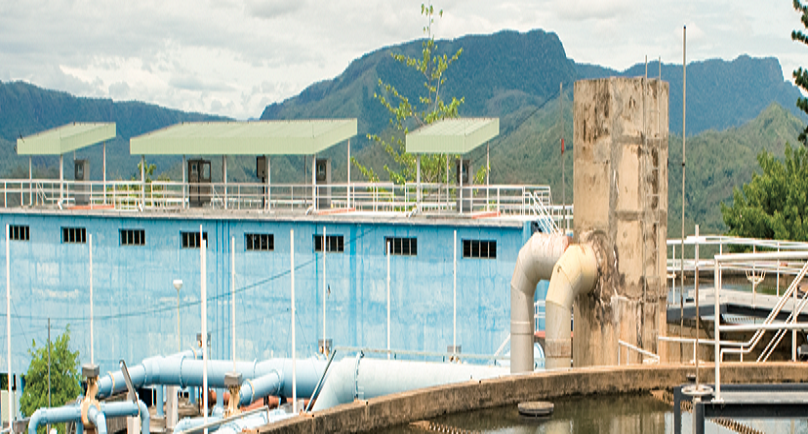Rising demand and a need to boost connectivity to the national grid are driving rapid expansion in Papua New Guinea’s electricity sector, with a range of sources tapped to meet the government’s power access targets.
Currently, PNG has less than 600 MW of installed generation capacity, according to the Department of National Enterprises, and frequent outages due to spikes in demand mean the existing grid is consistently under pressure. On top of this, much of the country lacks access to electricity – particularly in rural areas – hindering economic growth.
Growth prospects for hydro and solar
One way the government is working to address this is through large-scale hydroelectric projects. The largest of these is a $2bn dam to be built by Italy’s Salini Impregilo and the PNG government at Karimui in Chimbu Province, adding some 1800 MW of capacity when it is switched on in 2023. Awarded the contract in 2015, Salini is due to start construction this year.
Another facility – known as Ramu 2 – will be built on the Ramu River in Eastern Highlands, contributing a further 180 MW. The contract to develop this project has been awarded to Sinohydro and Shenzhen Energy Group, both Chinese firms.
A third project in Central Province will boost capacity by another 50 MW, with much of its output to be sold on to the Port Moresby market. The plant is being built by Chinese firm PNG Hydro Development for PGK640m ($201m) and is expected to wrap up by 2020.
These investments, alongside other state outlays on “green” generation sources such as solar and biomass, are intended to lift renewable energy’s share of the power mix to at least 32% by 2030, rising to 100% by 2050.
Hydropower will be central to achieving this: studies estimate that PNG has around 15,000 MW of hydro potential, if you combine large-scale plants (those with more than 10-MW capacity) with smaller hydro projects.
The sharper focus on renewable energy, and on diversifying power sources, is also vital to the government’s goal of ensuring 70% of the population has access to electricity by 2030, up from around 15% at present.
Such a connectivity boost will require extensive investment given the rugged terrain in much of the country, as well as the long distances between power stations and many consumers.
To overcome such constraints, in mid-April Origin Energy PNG, the local arm of the Australian electricity and gas supplier, partnered with the International Finance Corporation to launch a new pilot venture in solar power, offering off-grid home systems that can power rural communities.
These systems are now being tested in villages outside Port Moresby and can later be scaled up by adding more panels and devices, according to Lesieli Taviri, CEO of Origin Energy PNG. Origin is also looking to partner with a local telecoms provider or bank to facilitate digital or electronic payment methods.
“About a third of the 70% [power access] goal is a potential market for scalable off-grid solutions,” Taviri told OBG. “The cost to venture off-grid using traditional energy sources is huge, but technology has now caught up to where we can offer scalable solutions in a more commercially viable manner.”
Foot on the gas
The country is also tapping its considerable fossil fuel resources to meet rising demand for electricity in the near term.
Earlier this year ExxonMobil said that approximately 20% of the power demand in Port Moresby was being met using PNG LNG gas, and that good progress was being made on a 50-MW power project that will also use PNG LNG gas as a feedstock. When completed – a date for which has not yet been announced – the plant will be able to meet 40% of peak demand in Port Moresby, with the potential to expand to 200 MW.
This capacity boost will feed directly into the economy and fuel new efforts to extend electrification, according to Andrew Barry, managing director of ExxonMobil PNG.
“We clearly see the value, through the multiplier effect, of making reliable cheap power available to everyone – particularly in Port Moresby,” he told OBG. “Small and medium-sized enterprises in the area will benefit the most, as one of their biggest initial challenges is to get reliable, affordable power to start their business.”
Potential also exists for gas-fired plants elsewhere in PNG, Barry added, as ExxonMobil has the capacity to sell gas on to other independent power producers.



1 comment
PNG’s economy is entirely depended upon the Mining Industry and this is scary.